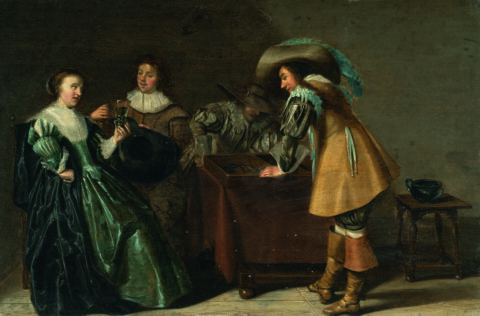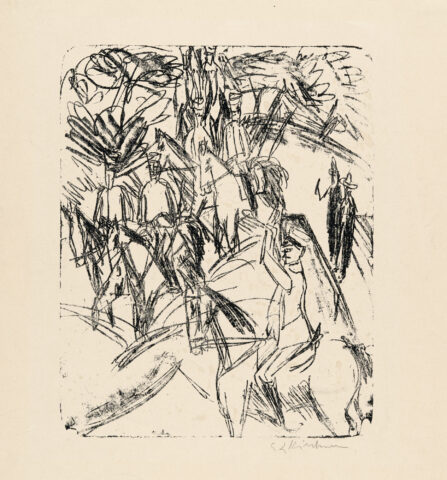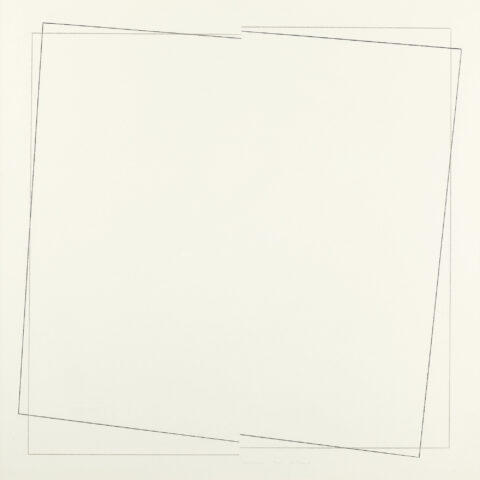
Merry company in a landscape garden
Details
Literatur:
Britta Nehlsen-Marten, Dirck Hals 1591-1656. Œuvre und Entwicklung eines Haarlemer Genremalers, Weimar 2003, Kat.-Nr. 39, Abb. 120.
Provenienz:
Jacob Hecht, Berlin, Auktion VI, 17. und 18.3.1925, Los 215a;
Richard Semmel (1875–1950), Berlin, Amsterdam, New York;
Frederik Muller & Cie., Amsterdam, Auktion, 21.11.1933, Los 19, mit Abb. (laut Weltkunst, Jg. VII, Nr. 52/53, vom 24.12.1933, S. 4, für 1450 fl. verkauft;
Kunsthandel Pieter de Boer, Amsterdam;
Privatsammlung, Würzburg;
durch Erbfolge in Familienbesitz, Unterfranken (seit 1945);
Privatsammlung, Süddeutschland.
Description
Dirck Hals, the youngest brother of the more famous Frans Hals (1580-1666), is best known for his depictions of cheerful garden parties (“Buiten-partijs”) and society pieces with amorous allusions. An elegant group of guests has gathered outside at a laid table. While the wine is being chilled in a tub of water on the right, couples have already formed – people are making eyes at each other. Meanwhile, nobody is paying any attention to the food. The pâtés lie untouched on the tray, while the full wine glasses have been placed on a wall to the left, out of reach. Whilst the food rests, the casual conversations seem to be in full swing. In the background, the terrace opens out onto a baroque park with a pavilion that invites you to take a stroll – preferably underneath. The theme echoes the tradition of the love gardens of the 16th century, where young lovers amused themselves in charming surroundings.
This painting was part of the important collection of paintings belonging to the Berlin-based Jewish textile manufacturer Richard Semmel (1875 Zobten, Silesia – 1950 New York), who had been an authorised signatory of the Arthur Samulon & Co. linen factory since 1902 and its sole owner since 1919. By the end of the 1920s, he had built up a collection that was in no way inferior to the great collectors of the Weimar Republic. It included works by Jan van Scorel, Dirck Hals, Bernardo Strozzi, but also by Paul Gauguin, Pierre Auguste Renoir, Camille Pissarro and Vincent van Gogh. The art historian and museum director Dr Paul Wescher wrote an appreciation of the paintings in the Semmel Collection in 1930 in: Pantheon, Monatsschrift für Freunde und Sammler der Kunst, vol. 5, January – June 1930, pp. 275-278. In April 1933, after the Nazi Party seized power, Richard Semmel emigrated to Amsterdam and fled to New York via Chile and Cuba in 1940 before the Germans invaded the Netherlands, where he died in 1950.
An agreement in accordance with the Washington Agreement was concluded with the heirs of Richard Semmel in April 2024.
* All results incl. buyer’s premium (27%) without VAT. No guarantee, subject to error.
** All post-auction prices excl. buyer's premium and VAT. No guarantee, subject to error.
*** Conditional Sale: The bid was accepted below the limit. Acquisition of the work may still be possible in our post-auction sale.
R = regular taxation
N = differential taxation on works of art which originate from a country outside of the EU
The private or commercial use of images shown on this Website, in particular through duplication or dissemination, is not permitted. All rights reserved.









